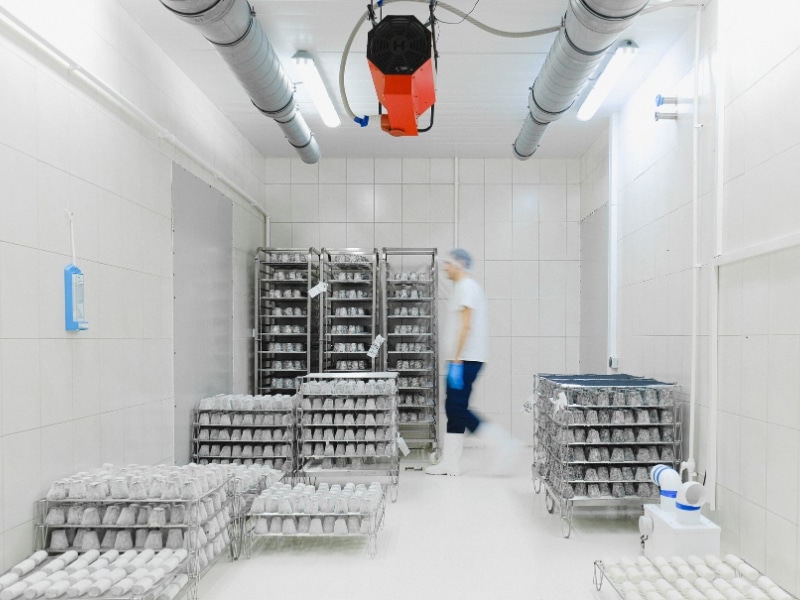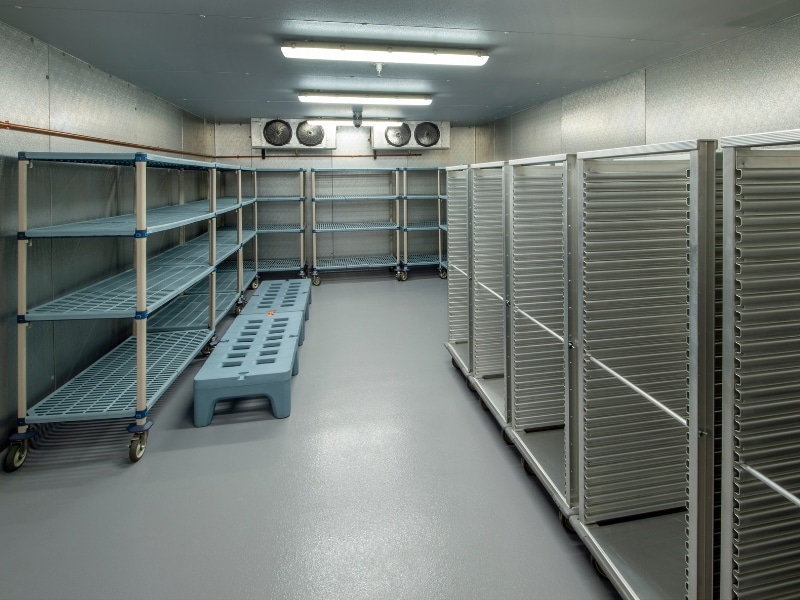Staying ahead of grime and bacteria isn’t a chore—it’s a business essential. Cool room cleaning done at the right time helps you dodge spoiled stock, health risks, and skyrocketing power bills. No one wants a nasty surprise when an inspector pops by or the fridge breaks down on a hot day. Many operators assume that a casual wipe-down will suffice. In reality, hidden mould and dirt sneak into corners, quietly driving up costs and wrecking your equipment. This article explores when to schedule cleaning, identify potential issues early, and maintain your cool room in optimal condition.
Why is regular cool room cleaning essential?
Clean spaces are safer, more efficient, and better for business. Regular cleaning protects your investment and ensures smooth operations.
- Contamination prevention: Reduces the transfer of bacteria between batches and surfaces. Even a small patch of unseen mould can multiply fast and ruin entire shipments,
- Odour control: Stops smells from seeping into your products, which often leads to customer complaints or discarded stock.
- Equipment preservation: Slows down wear on seals, coils, and fan blades. Preventative cleaning extends the lifespan of your assets and minimises sudden failures.
- Compliance readiness: Meets health code standards year-round and avoids costly emergency cleans after a failed inspection.
A structured cleaning schedule also makes training new staff easier. When everyone is familiar with the process, expectations remain clear, and no critical steps are overlooked. Over time, this consistency supports smoother audits and fewer last-minute scrambles before inspections.
What problems can dirty cool rooms cause over time?
Over time, grime doesn’t just look crooked—it causes real damage. Staying alert to issues is the first step in prevention.
- Product spoilage: Leads to wasted stock and lost revenue. Even minor temperature fluctuations can render meat, dairy, or seafood unusable.
- Equipment corrosion: Damages evaporator fins, shelving, and drain lines. Corroded components often cost more to replace than to clean regularly.
- Inefficient cooling: Triggers inconsistent temperatures that compromise product quality and compliance.
- Fines and shutdowns: Fails routine inspections that can lead to temporary closure notices, hurting your reputation and bottom line.
Poor cleaning also affects staff morale. Working in a space that smells foul or feels damp creates stress and frustration.
It’s harder to maintain focus when constant complaints or spoilage issues eat into time and energy. If these concerns sound familiar, it’s helpful to learn the signs that your cool room may need repairs, so you can act early and avoid a cascade of problems.
How does poor cleaning affect energy costs and food safety?
Dirty, cool rooms consume more electricity and put your food safety at risk. Even minor neglect snowballs into costly problems.
- Clogged evaporator coils: Force systems to run longer and harder, driving up electricity bills and risking system burnout in peak seasons.
- Broken seals: Allow warm air inside, risking spoilage and triggering alarms. Constant strain on compressors often causes unexpected breakdowns.
- Mould growth: Harms stored goods, creates health hazards, and can trigger allergic reactions for staff.
- Temperature swings: Push products outside safe zones, leading to bacterial growth and wasted stock.
Businesses seeking to lower their operational expenses can benefit from implementing energy-efficient refrigeration practices as part of a comprehensive maintenance strategy. Staying proactive with these practices helps keep your equipment in better shape and maintains steady temperatures.
| Issue | Extra Energy Cost | Food Safety Impact |
| Dirty coils | Up to 30% higher bills | Uneven cooling and spoilage |
| Worn door gaskets | Heat leaks and condensation | Faster spoilage |
| Mould build-up | Costly deep cleans | Contamination and odours |
| Ice accumulation | Blocked airflow | Temperature instability |
What steps should you follow for effective cool room cleaning?
A clear process ensures nothing gets missed. Proper cleaning is structured and thorough.
- Stock removal: Empty all items and store them safely in a separate chilled area to prevent spoilage during cleaning.
- Power isolation: Shut off power to avoid accidents with electrical components and protect staff during deep cleans.
- Surface scrubbing: Clean walls, floors, and racks with approved detergents. Pay attention to corners and seals where grime tends to accumulate unnoticed.
- Component cleaning: Thoroughly wipe fans, coils, and door seals. Dust and mould often collect behind protective covers that require removal for access.
To stay consistent all year, many businesses rely on essential cool room maintenance for every season, combining professional servicing with a thorough in-house checklist.
Which signs indicate it’s time for a thorough cool room cleaning?
Small clues often point to larger problems brewing. Recognising them early saves stress and cash.
- Persistent smells: Strong odours that persist after a basic clean usually indicate bacteria or mould in hidden areas.
- Excess condensation: Unexplained moisture or frost build-up suggests temperature imbalances or failing gaskets.
- Unsteady temperatures: Difficulty keeping the correct chill can lead to serious spoilage issues over a single weekend.
- Sticky residues: Grime that resists surface wipes often requires professional-grade cleaning and may signal biofilm formation.
Keeping ahead of these warning signs helps prevent emergencies and protects your stock from unexpected loss.
How can your team maintain cleanliness between services?
Small habits keep your cool room fresher for longer. Training staff to follow daily protocols and adopt efficient strategies for maintaining a clean cool room helps avoid emergencies..
- Daily checks: Review temperatures and log readings to spot inconsistencies early.
- Prompt cleaning: Remove spills straight away to prevent sticky residues that attract mould.
- Stock rotation: Rotate inventory to maintain freshness and ensure older stock gets used first.
- Seal inspections: Check gaskets weekly for cracks, tears, or gaps that could compromise temperature control.
Over time, these practices reduce the need for urgent repairs and keep operations running smoothly. If you need a structured guide, explore resources that align with your operation’s needs and help you set clear standards.
Final thoughts
Timing is everything. Staying proactive with your cleaning schedule reduces energy costs, safeguards stock, and supports compliance. Every site has unique needs shaped by climate, workload, and product type. Investing time to map out a schedule tailored to your space saves money and effort in the long run. Whether managing a café, a butcher’s shop, or a busy warehouse, detail-focused cleaning pays off over the long haul. For extra guidance, consider exploring how Ice Man Sydney supports your maintenance goals to keep your cool room performing optimally.



